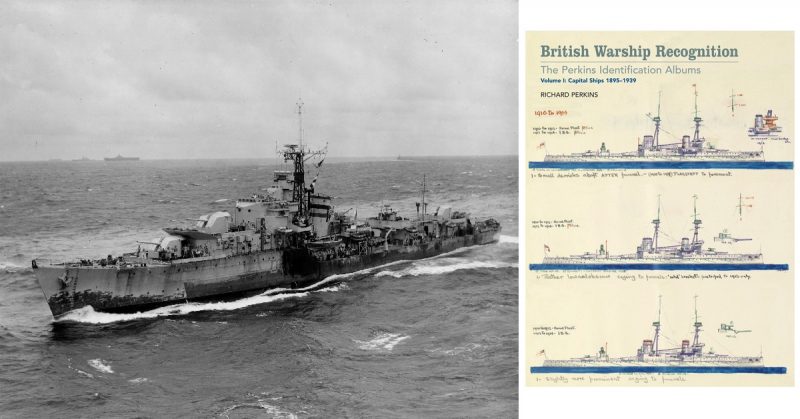Back when I started reviewing books for WHO I allowed myself the indulgence of seeking out naval photo archive books to feature on this page. The site has grown but I still love these books and it stems from my day job where I have access to quite a large number of warship photographs. I suppose it also relates to seeing them on the walls of pubs with maritime connections or in other places related to the sea. I am also a sucker for the beautiful models of ships that used to be seen in shipping line offices and the premises of maritime insurers. There were a surprising number to see walking around the City of London in the old days but they are largely a thing of the past and command a lot of money at auction these days. The Science Museum in London used to display a large collection, including the liner my grandfather served on. Heady stuff, but photographs remain a much more accessible interest. Archive books fit the bill and I now have quite a few to enjoy.
Despite my interest, I had never heard of Richard Perkins, a man who we could accurately describe as a bit of a warship geek. He built up a vast collection of naval photographs, so much so that it didn’t really fit in his house anymore. One way or another the entire collection was deposited with the National Maritime Museum at Greenwich. What is astounding is Mr Perkins had also developed a quite stunning series of large format recognition albums where he made sequences of line drawings of a vast number of Royal Navy ships he had photographs of. He annotated the drawings to reflect refits and the progress of warship technology and weaponry. These albums were done for his own use to help him identify individual ships in photographs. He started work in the late 1920s and had to more or less stop in 1939 when the powers that be took exception to him continuing with his passion. From this distance it seems like a bit of a shame, but their reasons all make sense.
Seaforth have taken the original recognition albums and produced them ‘as is’ with the bare minimum of interpretation. Mr Perkins was clearly something of a gifted draughtsman as he was a photographer. His vast knowledge of warships was built from an abiding passion for all things to do with what people called the Grey Funnel Line – the Royal Navy. He was doing this stuff at a time when the Senior Service was still the world’s largest by a long way when Britannia genuinely ruled the waves. It is reflected in this first volume on battleships. The Royal Navy had quite a lot of them.
How do I review a book like this? Short answer is I can’t. Mr Perkins’ work is outstanding and the drawings and notes are things of charm and beauty. As individual images they would be valuable framed prints. As complete books they are priceless, the sort of stuff that turns up on the Antiques Roadshow and makes grown men sigh. But you only have to look at these books to see this for yourself. You don’t need a third party to tell you.
So what can I do? I can tell you these books are not cheap and they are certainly not small. They will undoubtedly appeal to a niche market – the sort of people who will be able to find errors (if any) – and the lovers of maritime art. I don’t know what the general reader would take from them. Regardless of this the book brings me out in a big cheesy grin. Richard Perkins may have been something of an obsessive, but he also had vision. He was meticulous in his planning and cataloguing of modifications to specific ships and he had the sense to record all the details using a fairly easy to follow system. He did it all for himself, but now it his masterpiece is available to us. Blokes like lists and, in effect, that is what these books are, albeit with colour drawings. Seaforth plan volumes of the full set.
God bless Richard Perkins. He seems to have exuded a particularly English eccentricity lots of people wish they had a smidgeon of. The Englishness of collections reminds me of a book about men and their sheds I was given some years ago. I ended up with two copies and it was apparent that a gentle dig at my own collecting bug was in danger of devouring itself. All consuming hobbies can be considered a bit grey and utterly pointless, but many provide us with something a little special. The next time you are making lists of your vinyl LPs, garden gnomes or Hot Wheels cars, think of Richard Perkins. His dedication is now valued way beyond the confines of his cluttered attic and his archive has become a priceless piece of history. It might not happen to that drawer full of Ikea Allen keys you are hoarding but there is hope for some of us after all.
Reviewed by Mark Barnes for War History Online.
BRITISH WARSHIP RECOGNITION
The Perkins Identification Albums
Volume 1: Capital Ships 1895-1939
By Richard Perkins
Seaforth Publishing
ISBN: 978 1 84832 382 7

